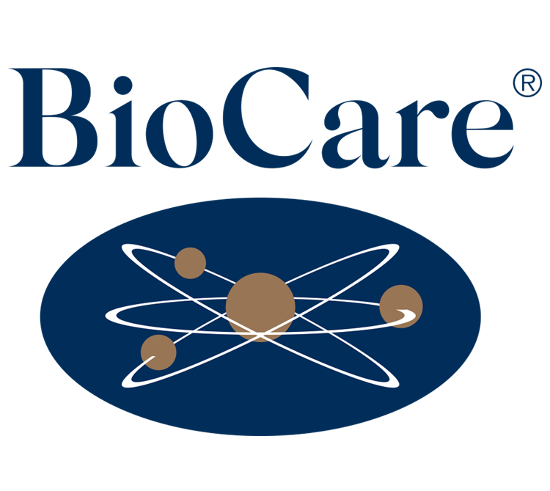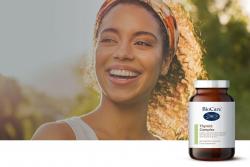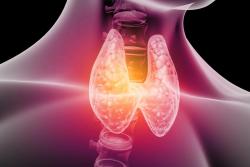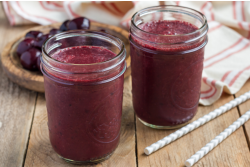The female body is a complex system of several hormones working in synergy to regulate physiology, behaviour, and the ability to thrive and reproduce. Hormone balance is a cornerstone of women’s health. Unfortunately, maintaining this natural balance has never been more difficult due to the modern environment we live in and our busy lifestyles. One of the main hormones that is directly impacted by this is oestrogen.
WHAT IS OESTROGEN
Oestrogen is one of the main sex hormones, produced by women, which is responsible for a number of functions, from regulating menstrual cycles to maintaining bone density,[i] regulating fat stores,[ii] and supporting learning and memory.[iii]
There are three types of oestrogen: oestradiol (most potent and predominant in reproductive years), oestrone (predominant during and after the menopause[iv]), and oestriol (present in large amounts during pregnancy[v]). Through oestrogen metabolism, we also produce different metabolites, some of which can be harmful.
WHEN THINGS GO WRONG – OESTROGEN DOMINANCE
Some women might experience symptoms of ‘oestrogen dominance’, commonly understood as having too much oestrogen in the body. We see it as a state of excessive oestrogenic activity which can involve any or all of the following factors:
Essentially, you could imagine it as a funnel; if we have a lot of oestrogen floating around whilst our body is unhealthy and unable to detoxify effectively, we end up with too much oestrogen, or the wrong types of metabolites.
Input
This can then lead to various symptoms and conditions, including:
- Premenstrual syndrome (PMS)[xiii]
- Heavy and painful periods
- Water retention [xiv]
- Fibroids[xv]
- Endometriosis[xvi]
- Fibrocystic breasts[xvii]
- Headaches or migraines[xviii]
KEY LIFESTYLE RECOMMENDATIONS
- Use natural and organic cosmetics to avoid parabens,[xix] phthalates and other compounds that can act as oestrogen in the body, disrupting hormonal balance.[xx],[xxi] On average, women use 12 personal care products a day, exposing themselves to 168 chemical ingredients.[xxii]
- Avoid storing food in plastic containers or using cling film which might contain BPA.[xxiii] Even BPA-free plastic is now believed to leak some chemicals.[xxiv] Use glass, ceramic, or stainless steel for food and drink storage and microwaving.
- Shop receipts are also major source of BPA. [xxv] People who handle receipts frequently have been found to have significantly elevated levels of BPA in their urine.[xxvi] Leave unnecessary receipts and wash your hands after handling then.
- Filter your water. You can install a water filter to the home mains water supply, or use a countertop water filter such as the Berkey filter.
- Regular physical activity can help to reduce stress and reduce oestrogen levels. [xxvii]
- Manage your stress by scheduling daily self-care, practicing meditation or deep-breathing exercises such as the ‘Box Breathing’ technique. Daily journaling and art therapy can also help you unwind and reduce your stress levels.
- Sleep is your ultimate repair time, so make sure you optimise both the quantity of sleep and the quality.
DIETARY RECOMMENDATIONS
- Reduce caffeine as it can increase the production of more potent types of oestrogen,[xxviii] and also decrease your ability to detoxify them effectively.
- Reduce alcohol consumption as it can increase levels of free unbound oestrogen.[xxix]
- Buy more organic produce, to reduce your exposure to pesticides. [xxx]
- Increase phytoestrogen intake from flaxseeds, sesame seeds, tofu and tempeh, which weakly bind to oestrogen receptors, blocking more stimulating types of oestrogen.[xxxi],[xxxii]
- Have a daily intake of cruciferous vegetables (e.g. broccoli, cauliflower, and kale) which are great sources of sulphoraphane[xxxiii] and can support the detoxification of oestrogen.
- Increase your intake of prebiotic-rich foods such as oats, banana, Jerusalem artichoke, chicory, to support a good balance of bacteria and regular bowel movements.
- Adding a protein source to each meal and reducing your intake of refined carbohydrates can help maintain balanced blood sugar levels.
- Increase foods rich in antioxidants (brightly coloured fruit & veg, green tea, spices) to reduce inflammation.
- Maintain good hydration to support elimination.
NUTRIENT SUPPORT
- Vitamin B6 and magnesium help with oestrogen balance[xxxiv] and reduces PMS symptoms.[xxxv], [xxxvi]
- Methylfolate and Calcium-D-Glucarate promote the methylation and glucuronidation pathways – the key pathways for oestrogen detoxification.
- Rosemary, broccoli extract & Indole-3-Carbinol promote healthy oestrogen detoxification and reduce the pro-inflammatory and harmful metabolites, aiding healthy oestrogen elimination and protecting our cells from damage.[xxxvii], [xxxviii]
- Green tea reduces circulating oestradiol and insulin, promoting healthy blood glucose levels.[xxxix]
- Red clover prevents the activity of more stimulating oestrogens,[xl],[xli] and reduces PMS.[xlii]
In addition to the above recommendations, here are a few resources to get you started:
- ‘Clue’ App for tracking your menstrual cycle.
- ‘Period Power’ book by Maisie Hill.
- ‘Hormones in Harmony’ podcast by Vivien Allred.
Got a question?
The brand you can talk to:
We have a team of Nutritionists at the end of our advice line, open to you, for product support and advice (5 days a week). 0121 433 8702 or clinicalnutrition@biocare.co.uk.
Not registered for an account with BioCare®?
You can register now to receive up to date news, product information and exclusive offers whether you are a consumer, practitioner or retailer.
References
[i] Cauley JA. Estrogen and bone health in men and women. Steroids. 2015; 99:11-5
[ii] Kim JH et al. The role of estrogen in adipose tissue metabolism: insights into glucose homeostasis regulation. Endocrin J. 2014; 61(11):1055-67
[iii] Barth C, Villringer A, Sacher J. Sex hormones affect neurotransmitters and shape the adult female brain during hormonal transition periods. Front Neurosci. 2015; 9: 37.
[iv] Rannevik et al. A longitudinal study of the perimenopausal transition: altered profiles of steroid and pituitary hormones, SHBG and bone mineral density. Maturitas. 1995; 21 (2): 103-13.
[v] Mucci LA et al. Pregnancy estriol, estradiol, progesterone and prolaction in relation to birth weight and other birth size variables (United States). Cancer Causes Control 2003;14:311–8.
[vi] Fulghesu AM et al. The impact of insulin secretion on the ovarian response to exogenous gonadotropins in polycystic ovary syndrome. J Clin Endocrinol Metab. 1997; 82 (2): 644-8.
[vii] Williams G. Aromatase up-regulation, insulin and raised intracellular oestrogens in men, induce adiposity, metabolic syndrome and prostate disease, via aberrant ER-α and GPER signalling. Mol Cell Endocrinol. 2012;351(2):269-78
[viii] McTernan PG et al. Gender differences in the regulation of P450 aromatase expression and activity in human adipose tissue. International Journal of Obesity. 2000; 24:875-881
[ix] Nagata C et al. Light exposure at night, urinary 6-sulfatoxymelatonin and serum estrogens and androgens in postmenopausal Japanese women. Cancer Epidemiol Bio Prev. 2008; 17 (6).
[x] Krishnan AV et al. Bisphenol-A: an estrogenic substance is released from polycarbonate flasks during autoclaving. Endocrinology. 1993;132:2279–86.
[xi] Sheikh IA et al. Endocrine disruption: computational perspectives on human sex hormone-binding globulin and phthalate plasticizers. PLoS One. 2016; 11 (3): e0151444.
[xii]Wang J et al. Recent Advances on Endocrine Disrupting Effects of UV Filters. Hong H, ed. International Journal of Environmental Research and Public Health. 2016;13(8):782.
[xiii] Schmidt PJ et al. Differential behavioural effects of gonadal steroids in women with and in those without premenstrual syndrome. N Engl J Med. 1998; 338(4):209-16
[xiv] Stachenfeld NS. Sex Hormone Effects on Body Fluid Regulation. Exercise and sport sciences reviews. 2008;36(3):152-159.
[xv] Bulun SE. Uterine Fibroids. N Engl J Med. 2013; 369(14): 1344-55
[xvi] Vercellini P et al. Endometriosis: pathogenesis and treatment. Nat Rev Endocrinol. 2014; 10(5): 261-75
[xvii] Wypych K, Kuźlik R, Wypych P. [Hormonal abnormalities in women with breast cysts]. Ginekol Pol. 2002 Nov;73(11):1117-25.
[xviii] Borsook D et al. Sex and the migraine brain. Neurobiol Dis. 2014; 68:200-14
[xix] Darbre PD, Harvey PW. Parabens can enable hallmarks and characteristics of cancer in human breast epithelial cells: a review of the literature with reference to new exposure data and regulatory status. J Appl Toxicol. 2014;34:925–38.
[xx] Déchaud H et al. Xenoestrogen interaction with human sex hormone-binding globulin (hSHBG). Steroids. 1999 May;64(5):328-34.
[xxi] Shanle EK, Xu W. Endocrine disrupting chemicals targeting estrogen receptor signaling: Identification and mechanisms of action. Chemical research in toxicology. 2011;24(1):6-19.
[xxii] Envtl. Working Grp., Exposures Add Up- Survey Results (2004), http://www.ewg.org/skindeep/2004/06/15/exposures-a...
[xxiii] Krishnan AV et al. Bisphenol-A: an estrogenic substance is released from polycarbonate flasks during autoclaving. Endocrinology. 1993;132:2279–86.
[xxiv] Bittner et al. Estrogenic chemicals often leach from BPA-free plastic products that are replacements for BPA-containing polycarbonate products. Environmental Health. 2014;13:41
[xxv] Molina-Molina et al. Determination of bisphenol A and bisphenol S concentrations and assessment of estrogen- and anti-androgen-like activities in thermal paper receipts from Brazil, France, and Spain. Environmental Research. 2019;170:406-415
[xxvi] Ehrlich et al. Handling of Thermal Receipts as a Source of Exposure to Bisphenol A. JAMA, 2014; 311 (8): 859.
[xxvii] Ennour-Idrissi et al. Effect of physical activity on sex hormones in women: a systematic review and meta-analysis of randomized controlled trials. Breast Cancer Research. 2015;17:139.
[xxviii] McTernan PG et al. Gender differences in the regulation of P450 aromatase expression and activity in human adipose tissue. International Journal of Obesity. 2000; 24:875-881
[xxix] Rinaldi S et al. Relationship of alcohol intake and sex steroid concentrations in blood in pre- and post-menopausal women: the European Prospective Investigation into Cancer and Nutrition. Cancer Causes Control. 2006;17(8):1033-43.
[xxx] Breatveld et al. Pesticide exposure: the hormonal function of the female reproductive system disrupted? Reproductive Biology and Endocrinology. 2006;4:30
[xxxi] Cassidy. Potential tissue selectivity of dietary phytooestrogens and oestrogens. Curr Opin Lipidol 1999;10:47-52.
[xxxii] Brzezinski et al. Phytooestrogens: the "natural" selective oestrogen receptor modulators? Eur J Obstet Gynecol 1999;85:47-51.
[xxxiii] Heiss E al. Nuclear factor kappa B is a molecular target for sulforaphane-mediated anti-inflammatory mechanisms. J Biol Chem 2001;276:32008-15.
[xxxiv] Tully et al. Modulation of steroid receptor-mediated gene expression by vitamin B6. FASEB J 1994;8(3):343-49.
[xxxv] Wyatt et al. (1999) Efficacy of vitamin B-6 in the treatment of premenstrual syndrome: systematic review. British Medical Journal, 318, 1375.
[xxxvi] Quaranta et al. Pilot study of the efficacy and safety of a modified-release magnesium 250 mg tablet (Sincromag) for the treatment of premenstrual syndrome. Clin Drug Investig. 2007; 27 (1): 51-8.
[xxxvii] Reed GA, et al. A phase I study of indole-3-carbinol in women: tolerability and effects. Cancer Epidemiol Biomarkers Prev. 2005;14(8):1953-60.
[xxxviii] Cho H-J, et al. Pharmacokinetic Interactions of Herbs with Cytochrome P450 and P-Glycoprotein. Evidence-based Complementary and Alternative Medicine : eCAM. 2015; 2015:736431
[xxxix] Kao et al. Endocrinology 141: 980–987, 2000
[xl] Cassidy. Potential tissue selectivity of dietary phytooestrogens and oestrogens. Curr Opin Lipidol 1999;10:47-52.
[xli] Brzezinski et al. Phytooestrogens: the "natural" selective oestrogen receptor modulators? Eur J Obstet Gynecol 1999;85:47-51.
[xlii] Kim et al. Intake of dietary soy isoflavones in relation to perimenstrual symptoms of Korean women living in the USA Nurs Health Sci. 2006 Jun;8(2):108-13.






